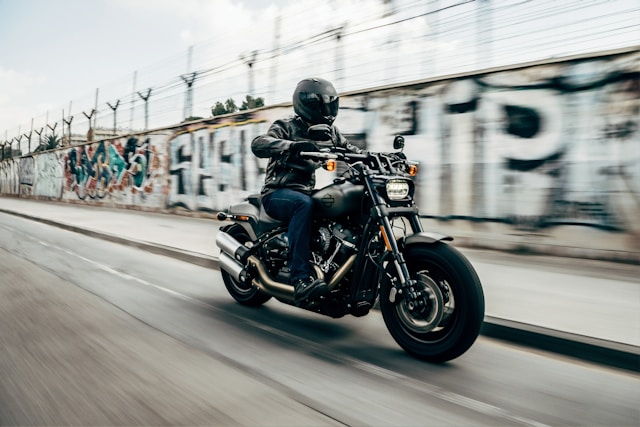In recent years, there has been a significant rise in the do-it-yourself (DIY) movement within the cafe racer community. This movement has been fueled by the accessibility of online resources, forums, and tutorials that provide detailed instructions on building and customizing cafe racers. Enthusiasts are now more empowered than ever to take on projects themselves, transforming stock motorcycles into bespoke works of art.
The DIY approach is not just about saving money; it’s also about the satisfaction and pride that comes with building something unique. Riders often start with affordable, older motorcycles that they strip down and rebuild, incorporating custom parts and modifications that reflect their personal style. This process often involves learning new skills, such as welding, painting, and mechanical repair, which adds another layer of engagement and fulfillment.
The Impact of Technology on Customization
Technology has played a crucial role in the evolution of cafe racers, particularly in the customization process. Modern tools and techniques have made it easier to achieve high-quality results at home. For example, 3D printing allows for the creation of custom parts that would have been difficult or impossible to fabricate by hand. Computer-aided design (CAD) software enables precise planning and visualization of modifications before any physical work begins.
Additionally, the availability of aftermarket parts specifically designed for cafe racers has expanded significantly. From custom seats and tanks to performance exhaust systems and LED lighting, riders have a wide array of options to choose from. This abundance of parts has made it easier for enthusiasts to achieve the classic cafe racer look while incorporating modern conveniences and performance upgrades.
Cultural Influence and Media
Cafe racers have long been associated with a certain cultural ethos, characterized by a rebellious spirit and a love for speed. This cultural influence has been perpetuated and amplified by media, including movies, television shows, and music. Films like “The Motorcycle Diaries” and “Easy Rider,” while not exclusively about cafe racers, capture the essence of motorcycle culture and the allure of the open road.
Television shows and online series dedicated to motorcycle customization and restoration have also played a significant role in popularizing cafe racers. These shows often feature expert builders who take on challenging projects, providing inspiration and practical advice to viewers. The rise of social media platforms like Instagram and YouTube has further democratized this content, allowing independent builders to share their projects and reach a global audience.
Environmental Considerations and Sustainability
As awareness of environmental issues grows, so too does the emphasis on sustainability within the cafe racer community. Many enthusiasts are turning to electric motorcycles as a way to enjoy the thrill of riding while minimizing their environmental impact. Companies like Zero Motorcycles and Energica are producing electric bikes that can be customized to resemble classic cafe racers, combining vintage aesthetics with cutting-edge technology.
Recycling and repurposing old motorcycles is another aspect of sustainability that appeals to the cafe racer ethos. By restoring and modifying vintage bikes, riders are giving new life to machines that might otherwise have ended up in a scrapyard. This practice not only preserves a piece of motorcycle history but also reduces the demand for new materials and the environmental footprint associated with manufacturing new motorcycles.
The Social Aspect of Cafe Racer Culture
The social aspect of cafe racer culture cannot be overlooked. Rallies, meets, and group rides are central to the community, providing opportunities for enthusiasts to connect, share ideas, and showcase their bikes. Events like the Distinguished Gentleman’s Ride, which raises funds for prostate cancer research and men’s mental health, highlight the camaraderie and philanthropic spirit within the community.
Local motorcycle clubs and online communities also play a crucial role in fostering connections among cafe racer enthusiasts. These groups offer support, advice, and a sense of belonging, whether members are seasoned builders or newcomers to the scene. The shared passion for cafe racers transcends geographical boundaries, creating a global network of riders united by their love for these iconic motorcycles.
The Future of Cafe Racers
Looking ahead, the future of cafe racers appears to be a blend of tradition and innovation. While the classic design elements that define cafe racers will continue to be cherished, there is ample room for technological advancements and creative reinterpretations. Electric powertrains, advanced materials, and smart technologies are likely to become more prevalent, enhancing the performance and sustainability of these bikes without compromising their distinctive style.
Moreover, as the DIY movement grows and customization becomes more accessible, we can expect to see an even greater diversity of cafe racers on the road. Each bike will tell its own story, reflecting the unique vision and craftsmanship of its builder. This evolution will ensure that the cafe racer remains a dynamic and influential part of motorcycle culture for years to come.
In conclusion, the evolution of cafe racer motorcycles from classic to contemporary is a testament to their enduring appeal and the creativity of their enthusiasts. Whether through traditional customization or embracing new technologies, the cafe racer continues to captivate and inspire, embodying the spirit of freedom, individuality, and innovation.
